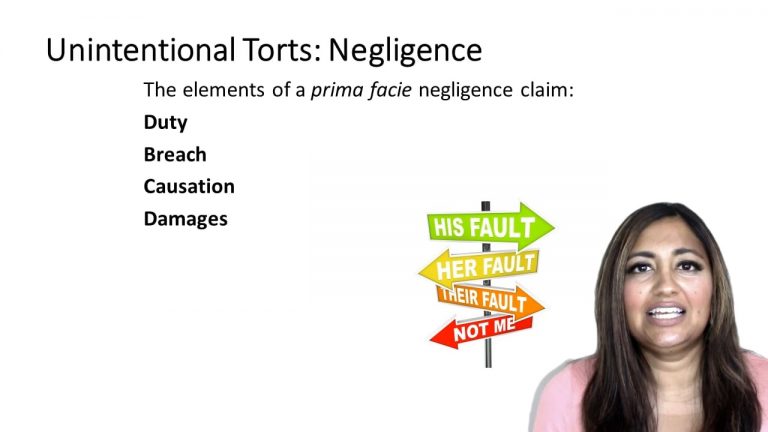SmartBrief
Confirm favorite deletion?
Torts keyed to Best
Gunn v. Robertson
Citation:
801 So. 2d 555 (La. Ct. App. 2001)Facts
While driving in a car with his family, Randall Gunn’s car collided with James Robertson’s car. Unbeknownst to Gunn, Gunn had a lifelong spinal defect that presented after the collision, causing severe pain and the need for surgery. Gunn sued Robertson, claiming that the incident resulted in pain and suffering, lost wages, and medical bills.
A jury trial resulted in an award for Gunn. As L9uisiana is a comparative-fault jurisdiction, the jury found that Robertson was 70% at fault for Gunn’s injuries. The jury thus awarded Gunn $1,000 in pain and suffering, $1,700 in medical bills, and $5,400 in lost wages. Gunn appealed, claiming that the amount awarded by the jury was below any amount that a reasonable jury would award in his situation.
Only StudyBuddy Pro offers the complete Case Brief Anatomy*
Access the most important case brief elements for optimal case understanding.
*Case Brief Anatomy includes: Brief Prologue, Complete Case Brief, Brief Epilogue
- The Brief Prologue provides necessary case brief introductory information and includes:
Topic:
Identifies the topic of law and where this case fits within your course outline.Parties:
Identifies the cast of characters involved in the case.Procedural Posture & History:
Shares the case history with how lower courts have ruled on the matter.Case Key Terms, Acts, Doctrines, etc.:
A case specific Legal Term Dictionary.Case Doctrines, Acts, Statutes, Amendments and Treatises:
Identifies and Defines Legal Authority used in this case.
- The Case Brief is the complete case summarized and authored in the traditional Law School I.R.A.C. format. The Pro case brief includes:
Brief Facts:
A Synopsis of the Facts of the case.Rule of Law:
Identifies the Legal Principle the Court used in deciding the case.Facts:
What are the factual circumstances that gave rise to the civil or criminal case? What is the relationship of the Parties that are involved in the case.Issue(s):
Lists the Questions of Law that are raised by the Facts of the case.Holding:
Shares the Court's answer to the legal questions raised in the issue.Concurring / Dissenting Opinions:
Includes valuable concurring or dissenting opinions and their key points.Reasoning and Analysis:
Identifies the chain of argument(s) which led the judges to rule as they did.
- The Brief Prologue closes the case brief with important forward-looking discussion and includes:
Policy:
Identifies the Policy if any that has been established by the case.Court Direction:
Shares where the Court went from here for this case.
Topic Resources
Topic Videos
 3m 43s
3m 43s 5m 51s
5m 51sTopic Refresher Course
